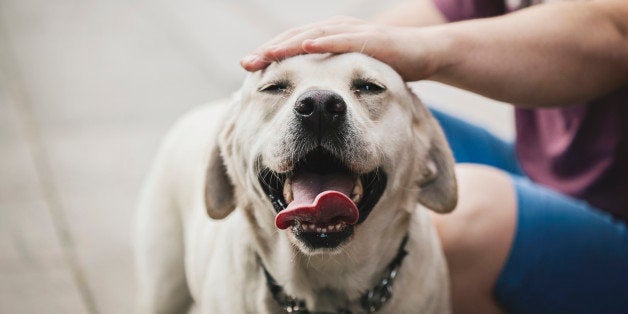
No owner wants to think about his dog going missing. But during the course of your dog's life, even with the best management and vigilance, it could happen: dogs become spooked during fireworks and bolt; they run off when fences are downed in natural disasters; and, sometimes they simply run through a gate that's been left open.
In the spirit of hoping for the best but preparing for the worst, here are five things to do now, just in case:
1. Make sure your dog's microchip and tags are up to date. Many people change their address or phone number without thinking twice about updating their dog's chip; the microchip company should be informed. (If your dog isn't microchipped, get it done right away; almost every veterinarian and shelter now has a scanner capable of reading them.) Speaking of identification, even if your dog's ID tag info is up to date, when's the last time you took a look at it? My dog Bodhi had been wearing the same engraved metal tag for years. Recently, when I went to adjust his collar, I noticed that the text had been all but worn off, rendering it unreadable.
2. That ID tag isn't worth much without a well-fitted collar. If your dog is a puppy, resize periodically as needed. If your dog is an adult, check regularly, but especially after events like being groomed (the groomer will remove it temporarily) or having medical treatment. A correctly fitted collar allows for two fingers to lie flat between it and the dog's body. You should not be able to pull the collar off over your dog's head, even with moderate tension. If you're worried about leaving a collar on your dog when you're gone, because of potential entanglement with another dog or getting hung on a fence or object, consider a breakaway collar.
3. Do regular inspections of your yard with an eye toward potential escape points. If you have wooden fencing, check that the slat bottoms haven't become so worn that your dog could dig under or push through. Chain link fencing should be checked for areas that have become curled up or pushed out. Regardless of fence type, ensure that you don't have tall garbage cans or other objects positioned too close to the fenceline, as they could act as makeshift stairs.
4. If your dog is a known escape artist, consider purchasing a GPS-style tracking product. Now available from various companies, the device sits on your dog's collar, and tracking is done via an app on your mobile device. There is a monthly service fee that varies depending on the company.
5. Keep a current photo of your dog handy. Should the worst happen, that photo will be one of your most important assets, as you'll use it to create flyers and online posts.
Stay tuned for Part II, which offers tips on what to do if your dog becomes lost, including a few I bet you haven't considered!
Nicole Wilde is a canine behavior specialist and author. Visit her website www.nicolewilde.com.
Follow Nicole Wilde on Facebook: www.facebook.com/NicoleWildeAuthor
